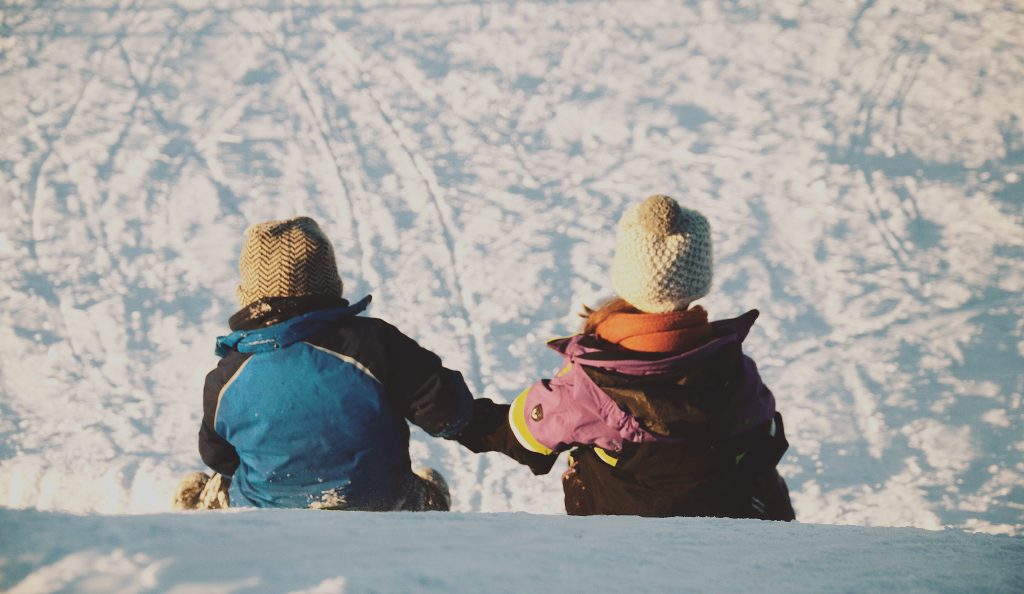Written By: Salvatore Shaw and Brandon Pedersen, Student-at-Law
With winter-related activities being significantly curtailed due to the COVID-19 pandemic, families are flocking to local hills and slopes to ride toboggans in an effort to get children outside. Tobogganing is without a doubt a fun and memorable activity you can do as a family. However, tobogganing is actually much more dangerous than many people realize.
Just how dangerous is it? Tobogganing ranks fourth in the risk of injury among sports and recreational activities, sitting only behind diving into shallow water, parachuting and snowmobiling. So why is tobogganing so inherently dangerous?
For starters, while tobogganing is something that everyone can participate in, there are no standard rules to follow and at times little to no monitoring by parents or adults. This lack of direction and guidance on how to safely toboggan is cause for concern.
In addition, toboggans can reach some fairly high speeds. The average speed of tobogganers is approximately 30 km/h.[1] These higher speeds create a greater risk of injury. Mix in a combination of numerous fixed obstacles (trees, posts, fences) and other toboggans hurtling down the hill, and you have the potential for serious injury.
Researchers from the KFV (Austrian Road Safety Board) and the Vehicle Safety Institute at Graz University of Technology have performed computer simulations using virtual human models tobogganing to investigate injury potential and which measures can help reduce risk.
The simulations completed showed that children tobogganing without helmets are at considerable risk of serious head injury from a speed of about 10 km/h. From a speed of about 20km/h, the risk of rib and femur fractures increases in addition to head injuries. The simulations also determined that when an adult and child are on the same toboggan, the safest place for children is BEHIND the adult. According to the testing, there is a significant risk of injury to a child’s thorax and thighs in addition to the risk of head injury, as a child is literally pushed into any fixed obstacle by the adult sitting behind. If, on the other hand, the child sits in the back, the head has additional impact protection from the adult’s back.
To help protect yourself and your family from injury this winter, the following are some basic recommendations that may help in preventing injures, while still getting out for some fun on a toboggan this winter:
- Wear a helmet – despite the common appearance of helmets at ski resorts, you’d be hard-pressed to find someone wearing a helmet while tobogganing, despite tobogganing being the risker activity. A proper and well-fitted helmet can significantly reduce the risk of brain injuries. Chose a snow sport helmet, such as a skiing or snowboarding helmet, and use it.
- Inspect the hill – make sure the area is safe for tobogganing. This includes ensuring there are no obstacles (trees, fences or large bumps/ditches, rocks, and bare spots), confirming that the conditions are snowy and not icy, identifying a long and barrier-free area where the toboggan will eventually come to a rest (not near a road) and tobogganing in well-lit areas (avoid tobogganing in the dark, when it’s difficult to see dangers or obstacles)
- Supervise – this goes without saying, but keep an eye on young children and make sure they understand how to safely toboggan, which includes waiting for the area to clear before heading down, riding the toboggan properly (not lying head-first – headfirst sledding has been associated with the most injury), always keeping an eye uphill for approaching toboggans and clearing the bottom area and walking up the sides of the hill after a run.
- Be aware of your surroundings – a collision between two or more tobogganers can cause significant injury. It is important to not only ensure the safety of those you’re responsible for but other tobogganers as well. Be sure to communicate with other users of the hill and be accommodating.
This winter, if you’re getting out and tobogganing in your neighbourhood, please be safe. For Torontonians, be sure to visit the City’s website to find a tobogganing destination that’s perfect for you and your family.
[1] Cimpello LB, Garcia M, Rueckmann E, Markevicz C. Sledding: how fast can they go? J Trauma. 2009. Link.






